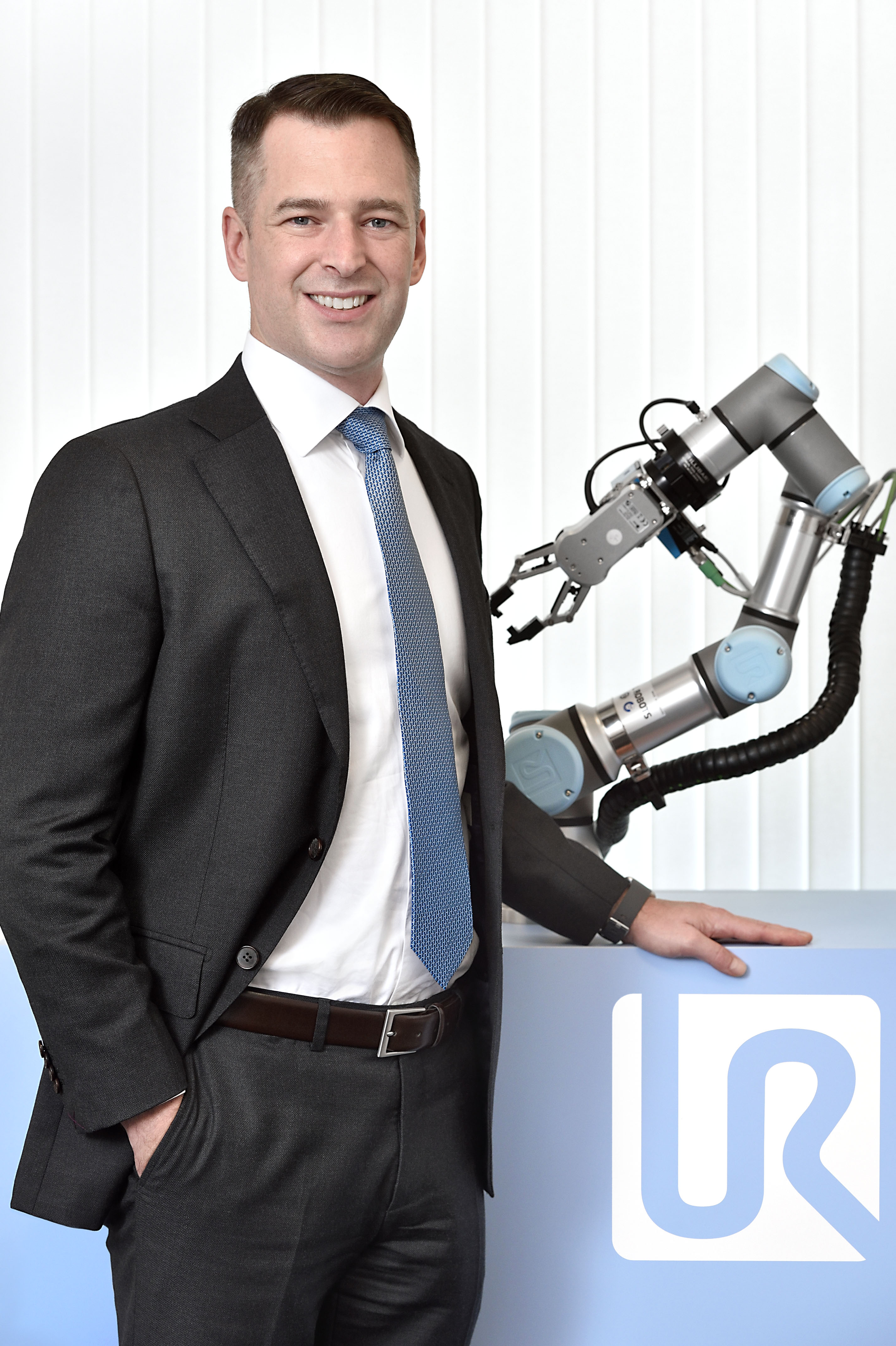Traditional robots in industrial settings work in zones separated from human operators. A collaborative robot or “cobot”, however, is designed to collaborate with, and ease the burden on human operators.
Traditional robots in industrial settings work in zones separated from human operators. A collaborative robot or “cobot”, however, is designed to collaborate with, and ease the burden on human operators.
Traditional industrial robots were designed to operate autonomously with limited guidance and to stay far away from human workers. Conversely, a collaborative robot or “cobot” is designed to physically interact with humans in a shared workspace, and to support human workers with daily tasks.
Cobots are usually smaller and easier to set up than other industrial robots, often requiring no coding for work instructions. Cobots also frequently include a built-in smart vision system to support tasks such as reading barcodes and recognizing colors.
Examples of cobots include robotic arms mounted on a wall to pick and remove defective objects, and lifting machines in a logistics center that bring the right package to the right shelf.
Traditional industrial robots can be imprecise, create safety hazards, and may require knowledge of coding programs for setup. They usually sit in a cage and complete automated tasks, such as painting, welding and labeling, without working with humans.
 Adam Sobieski, General Manager,
Adam Sobieski, General Manager,
Universal Robots Greater China.
“Some people still do not know what a ‘cobot’ is or what the concept of ‘collaborative’ means. Therefore, educating people about the differences between cobots and traditional industrial robots is important,” said Adam Sobieski, General Manager of Universal Robots Greater China.
“Once they understand the advantages of cobots more clearly, they will understand how for example UR cobots can help their business with automation.”
Risk assessment is the first step
Even though cobots are designed to operate safely beside humans, companies are advised to carry out a risk assessment.
“Doing the risk assessment is the first step because this process will pinpoint what safety issues or safety level you need to solve or achieve, and then what kind of components you should select accordingly,” said Sobieski.
General risk assessment includes document identification, making an outline about the robotic cell and machine assessment. Companies need to know clearly what the robot is used for, how will it be used, and who will be working with the robot, as well the risks. Potential risks to assess include the possibility of hazardous events, the possibility of avoidance and frequency of exposure.
Automation technology supplier Pilz, for instance, provides services that include risk assessment to identify the root cause of a hazard and how it should be eliminated, and what level of safety circuit requirement shall be achieved. It also validates the adaquecy of each safety component, function and system.
“We provide viable solutions to the most complex safety issues in a wide range of industry domains,” said Roger Wang, Senior Service and Product Technical Manager at Pilz Taiwan.
Once implemented, sensors not only improve safety in spaces shared between humans and robots, but also help improve robot performance.
A typical cobot can work at speeds between 250-750 millimeters per second. With a safety sensor built in, it can adjust to operate at maximum speed when it senses there’s no humans nearby. In other words, safety sensors let a cobot know when to work faster to improve production productivity and efficiency.
Another benefit of having safety sensors is that they reduce the amount of floor space required for a robot. The sensor allows factory managers to section off only the space used by the robot, instead of fencing in a robot inside a vast space. For instance, a perimeter safety sensor is able to detect when a person enters a safeguarded area, to help further ensure safety.